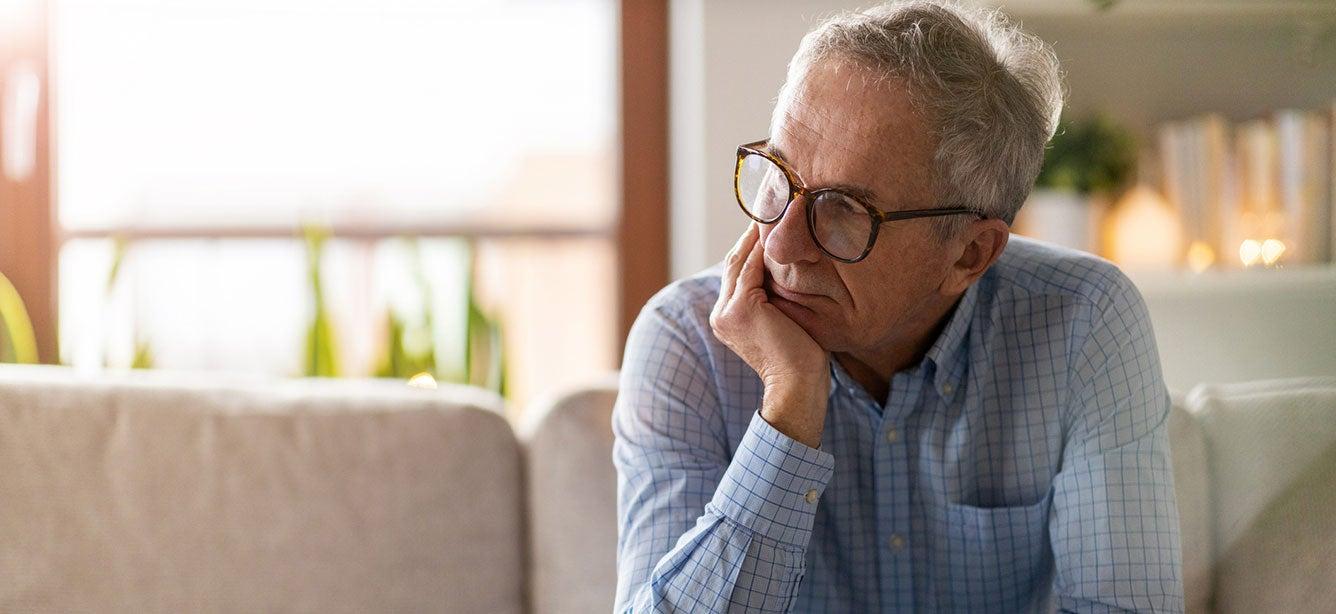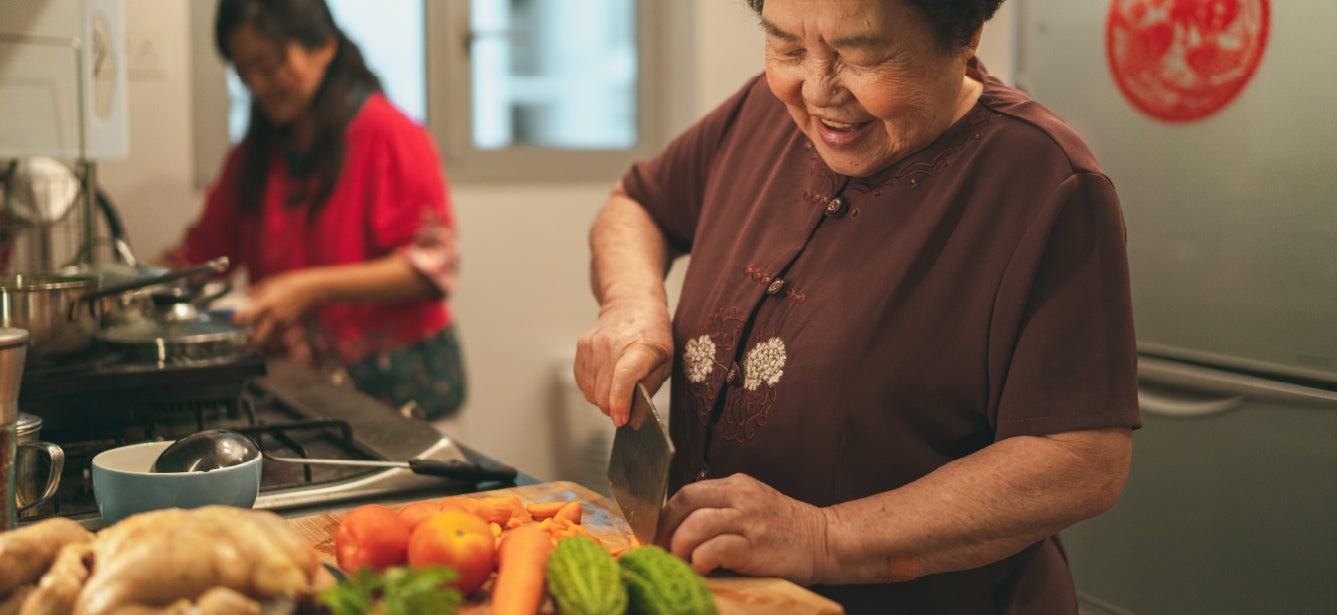
Related Topics
The COVID-19 pandemic, demographic changes related to an aging population, and advancements in technology have increased awareness and interest in social isolation and loneliness, and also the protective factor of social connection. The more we understand about ways to combat social isolation and loneliness and foster social connection, the more we can help ourselves and others.
Social isolation, defined as having objectively few social relationships and infrequent social contact, differs from loneliness, a subjective feeling of a lack of connection to other people and a desire for more satisfying relationships. While the two terms differ in meaning, the Global Initiative on Loneliness and Connection (GILC) highlights that they can occur at the same time.1
How big a problem is social isolation and loneliness?
Of course, social isolation and loneliness were prevalent prior to the pandemic, with more than a fifth of adults in the United States identifying as lonely, isolated, or both.2 A report from the National Academies of Sciences, Engineering, and Medicine (NASEM) found that nearly one-fourth of adults 65 and older are considered to be socially isolated.3
Researchers have pointed to older adults being more likely to live alone, lose a family member or friend, suffer from a chronic illness or hearing loss as risk factors for social isolation and/or loneliness. Additionally, the effects of COVID-19-related isolation have been especially detrimental to older adults in long-term care (LTC) facilities. In fact, an AARP report found lockdown among LTC facilities to be “fueling a mental health crisis,” riddled with depression, anxiety, and irritability.4
“As devastating as it has been, COVID-19 truly brought to light the issue of social isolation and loneliness especially among older adults—which in the past has often been overlooked,” said Carole Fisher, President of the National Partnership for Healthcare and Hospice Innovation (NPHI).
“Nowadays, more people are aging in place and generally living longer; however, they tend to be geographically apart from their loved ones. To this point, it is absolutely critical that we work to bolster social connection among older adults.”
Is social disconnection more likely at certain stages of life?
At the Connect+Health event—an interactive session within the Connect+Conversations series hosted by the Foundation for Social Connection (F4SC) and Social Health Labs—researchers, experts, and innovators talked about the idea that disconnection generally follows a U-shaped curve across the lifespan, with high rates of loneliness during young adulthood and later in life.
How can social isolation and loneliness impact the health of older adults?
Evidence reveals that social isolation and loneliness hinder good health—putting older adults at risk for high blood pressure, heart disease, obesity, a weakened immune system, anxiety, depression, cognitive decline, Alzheimer’s disease, and even death.5 Notably, leading researcherJulianne Holt-Lundstad found that loneliness can increase risk of mortality by 50%—higher than the effects of air pollution, obesity, and excessive alcohol use.6
What can older adults do while navigating social isolation and loneliness, and what role can we have in promoting social connection in aging populations?
Advances in technology can bolster in-person social connection
While technology has evolved and expanded over time, the fundamental need for social connection has not. When used in conjunction with in-person interactions, technology has the potential to assist with relationship maintenance, social capital access, and even emotional support.7 Even though some older adults may feel ill-equipped to jump into the world of digital connection, they should feel confident in asking for help. Fortunately, more tools are being designed with and for older adults, making it easier to include technology as a supplement for in-person connection.
What types of friendships can help combat loneliness?
Another key to strengthening our social connectedness: understand the value of friendship, and don’t be afraid to diversify your friendships across the lifecourse.
According to a survey conducted by AARP, nearly 40% of adults have a close friend at least 15 years older or younger than them. These multigenerational friendships have unique benefits, including:
- broadening perspectives
- providing role models
- boosting energy
- making both friends feel valued
Notably, when surveyed, both the older and younger companion in the pair nearly equally highlighted that their multigenerational friendship gives them a greater appreciation for their experiences.8
How can I prevent the damaging health effects of social isolation and loneliness?
Preventative services like screenings, dental check-ups, and vaccinations are key to protecting our physical health. Just as important: taking action on our social and mental health. Research shows a direct relationship between social relations and physical and psychological health—for instance, a lack of social relationships can increase your risk for ailments from cardiovascular disease and high blood pressure to depression and suicidal thoughts.
Health care providers, including geriatricians, can play a large role in educating patients on the importance of social connection. The isolation related to COVID-19 has led to a physical and cognitive decline among older adults, making the case for preventative measures, which may include specific screenings for social isolation or loneliness, and other mental health struggles.
What role does a community play in social connection?
Many experts agree that the community has a role to play in reducing the impact of loneliness and building more resiliency.9 However, this sentiment is twofold—while communities should enable connection, individuals have the opportunity to be intentional in their engagement with neighbors and community members.
For instance, The Villages Network—consumer-driven, grassroots community-based organizations formed with the goal of helping older adults age in place and stay connected to their communities—have been shown to improve population health, reduce isolation, and increase independence.10
Whether it be by volunteering, picking up a new hobby, or considering a move to a supportive community designed for older adults, intentionally engaging in one’s community can promote social connection and resiliency in aging populations. In fact, a global study by Nextdoor found that knowing as few as six neighbors reduced the likelihood of feeling lonely, and is linked to lower rates of depression and social anxiety related to COVID-19.11
How can I learn more about improving my social connectedness?
Please use the resources below as they relate to community engagement, social connection, and resilience, and may be helpful as you look for proactive steps to reduce the harmful effects related to isolation and loneliness.
- Foundation for Social Connection (F4SC) engages in education, increases public awareness, promotes innovative research, and spurs the development and implementation of evidence-based models that address social isolation and loneliness and promotes social connection. F4SC offers resources and research as well as free and accessible weekly research reports.
- Creating the Conditions for Social Well-Being is a report including recommendations for cross-sector stakeholders to address social isolation and loneliness. The report summarizes key takeaways, shares resources, and spotlights innovations from the eight-part Connect+Conversations series, which in total convened 26 speakers and over 2,500 community members from 55 countries.
- Far From Alone is a campaign that brings together partners committed to improving the mental health and wellness of others by increasing social connectedness. In collaboration with a collective of partners, Far From Alone promotes resources that increase social connectedness and reduces feelings of loneliness.
- National Alliance for Caregiving is dedicated to improving the quality of life for friend and family caregivers and those in their care, by advancing research, advocacy, and innovation. NAC works to enhance the capacity of the caregiving movement, which includes providing technical assistance to a national network of caregiver coalitions representing nearly 30 states and localities in the United States.
- Make Room @ The Table is an affinity group based in Chicago, Illinois. The members, including social workers, academics, philanthropists, physicians, nurses, social science researchers, nonprofit CEOs and community leaders are engaged in the field of aging. Annually they share Holiday Lists that are used to alleviate social isolation and loneliness among older people.
- Connect2Affect, spearheaded by AARP Foundation, seeks solutions in collaborations with the Gerontological Society of America, Give an Hour, the National Association of Area Agencies on Aging, and UnitedHealth Group. Through research and innovative efforts, they’re working to create a deeper understanding of loneliness and social isolation, draw crucial attention to the issue, and catalyze action to end social isolation among older adults. Their featured resources include an Eldercare Locator and a mapping tool for visualizing social isolation.
NCOA hosts the annual Older Adult Mental Health Awareness Day to highlight critical issues in addressing mental health needs as we age. We hope you'll attend to hear stories from others or find resources to help manage (and normalize talking about) your mental health.
This article is supported by the Administration for Community Living (ACL), U.S. Department of Health and Human Services (HHS) as part of a financial assistance award totaling $5 million with 100% funding by ACL/HHS. The contents are those of the author(s) and do not necessarily represent the official views of, nor an endorsement, by ACL/HHS, or the U.S. Government.
Sources
1. Badcock, J.C.,Holt-Lunstad, J., Garcia, E., Bombaci, P., & Lim, M.H.(2022). Position statement: Addressing social isolation and loneliness and the power of human connection. Global Initiative on Loneliness and Connection (GILC). Found on the internet at https://www.gilc.global/general-6
2. Loneliness and Social Isolation in the United States, United Kingdom, and Japan: An International Survey. (2018) Kaiser Family Foundation. Found on the internet at https://files.kff.org/attachment/Report-Loneliness-and-Social-Isolation-in-the-United-States-the-United-Kingdom-and-Japan-An-International-Survey
3. Social Isolation and Loneliness in Older Adults: Opportunities for the Health Care System. (2020) National Academies Press. Found on the internet at https://nap.nationalacademies.org/catalog/25663/social-isolation-and-loneliness-in-older-adults-opportunities-for-the
4. Is Extending Isolation Killing Older Adults in Long-Term Care? (2020). AARP. Found on the internet at https://www.aarp.org/caregiving/health/info-2020/covid-isolation-killing-nursing-home-residents.html
5. Social isolation, loneliness in older people pose health risks. (2019). National Institute on Aging. Found on the internet at https://www.nia.nih.gov/news/social-isolation-loneliness-older-people-pose-health-risks
6.Holt-Lundsted, et al. Social Relationships and Mortality Risk: A Meta-analytic review. PLOS Medicine. (2010). Found on the internet at https://journals.plos.org/plosmedicine/article?id=10.1371/journal.pmed.1000316
7. Killam, K. & Richards, A. (2022). Creating the Conditions for Social Well-Being: Insights from the Connect+Conversations Series. Social Health Labs and the Foundation for Social Connection. Found on the internet at https://www.socialhealthlabs.com/connect
8. The Positive Impact of Intergenerational Friendships (May 2019). AARP. Found on the internet at https://www.aarp.org/content/dam/aarp/research/surveys_statistics/life-leisure/2019/friendship-across-the-ages.doi.10.26419-2Fres.00314.002.pdf
9. The community is key in tackling loneliness (August 2014) The Guardian. Found on the internet at https://www.theguardian.com/society-professionals/2014/aug/21/the-community-is-key-in-tackling-loneliness
10. Village to village network helps communities establish and maintain their own Villages. Found on the interntet at https://www.vtvnetwork.org/content.aspx?page_id=22&club_id=691012&module_id=238482
11. Global study finds knowing as few as 6 neighbors reduces the likelihood of loneliness. (Dec. 2, 2020) Nextdoor. Found on the internet at https://about.nextdoor.com/press-releases/global-study-finds-knowing-as-few-as-6-neighbors-reduces-the-likelihood-of-loneliness/



